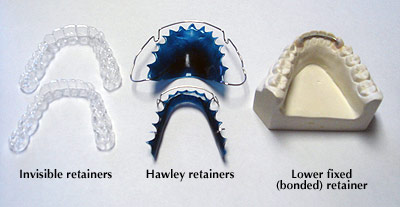How to Keep Your Teeth Straight After Braces

Braces use an extraordinary amount of pressure to force your teeth to move into new positions. After all, you’re remodeling your bone structure! And the process that started when you had your braces put on doesn’t stop once they come off. Your teeth are still moving, and it will take time for them to settle into their new position. Imagine a thin, springy bar of metal. As long as you hold it in a bent position, it will stay there. As soon as you let it go, it snaps back to its original straightness. Now your teeth won’t instantly move out of their new positions, but over time, they’ll begin to drift back to their original place. Enter – the retainer.
There are three different types of retainer that your orthodontist will choose, and you’ll need to wear it all day, every day, for a minimum of six months.
- A fixed retainer – this is a wire that’s cemented in place behind your back teeth, and can either go around the front of your teeth, or on the backside.
- A Hawley retainer – this retainer is made from a metal guide wire and acrylic that is fitted to your mouth. This is the most common type of retainer.
- Clear retainer – these are clear trays that are custom fitted to your mouth and simply slide over your teeth.
The amount of time you need to wear the retainer during the day will depend on your orthodontist’s discretion, and after that, you’ll need to wear the retainer every night for the rest of your life. Your teeth will always want to revert to their original position and for the most part, a retainer will prevent them from doing so. Most adults that need braces are patients who didn’t wear their retainer as they should have, and have their teeth have begun to retreat to their original position.
You must also continue to take excellent care of your teeth, and to watch carefully for teeth shifting. It’s far easier to correct a small problem, than to let a small problem snowball into a much larger one. If you’re concerned that your teeth have begun to shift, call Dr. Chauvin’s office to set up an appointment.


